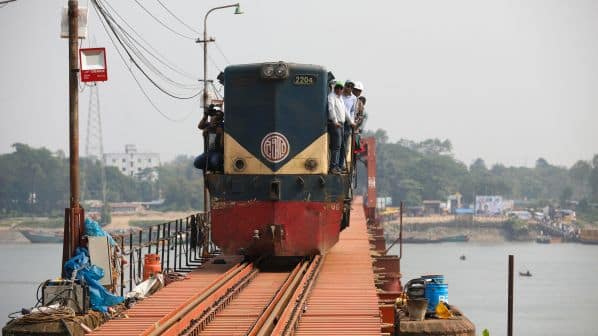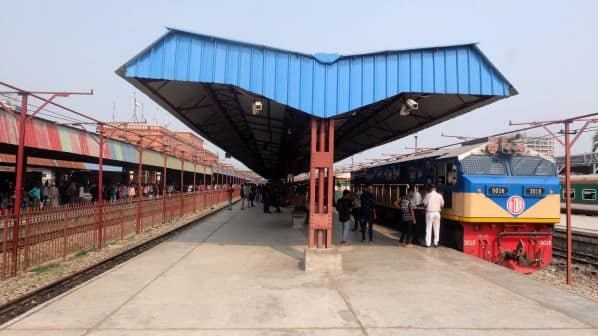BANGLADESH’S prime minister Ms Sheikh Hasina formally opened the new 102km railway between Chattogram and Cox’s Bazar in the eastern part of the country, near the border with Myanmar, at a festive ceremony on November 11.
“The long wait of Cox’s Bazar residents has finally come to an end. This is a day of feeling proud,” Hasina told crowds attending the inauguration outside the new, oyster-shaped Cox’s Bazar station. Completion of the current railway has not only been delayed by about 10 years: it was originally envisioned during the British colonial period, 133 years ago.
The completed single track, dual 1000mm, 1676mm-gauge line has cost more than Taka 180bn ($US 1.63bn). Proposed in 2010, the railway was originally only supposed to go from Chattogram to Bandarban, about 70km to the southeast, but the plans were changed after Myanmar backed out of continuing the railway on its side of the border, sources have told Bangladesh’s The Star. Nevertheless, “we plan to connect it to the Trans Asian Railway,” Hasina said at the inauguration.
Joint venture
Built by the China Civil Engineering Construction Corporation (CCECC), China Railway Group, and Bangladesh’s Max Group, the railway is the first completed joint venture project between Chinese and Bangladeshi companies.
China originally also wanted to finance the project, but the Bangladeshi government rejected the offer in 2015. The reasons for doing so have not been disclosed, and ultimately, the line was financed jointly by the Asian Development Bank (ADB), which confirmed a €368m loan for the project in August, and the Bangladeshi government. This was seen at the time as a setback for China’s ambitions and rivalry with Japan in the region.
The new railway connects Chattogram and, by extension, Dhaka, with the popular tourist resort of Cox’s Bazar, which boasts the world’s largest sandy beach. This is seen as a potential boost for tourism in the area when Dhaka - Cox’s Bazar services are to begin in December - that is, providing that Bangladesh Railway is able to recruit the about 250 people it currently lacks to staff them.
The line will also be connected with the first deep-sea port in Bangladesh, Matarbari, which is currently under construction, and which will drastically enhance export opportunities for local industries, notably textile manufacturers, and imports for such raw materials as iron ore.
While financed by Japan and built instead of China’s proposed Sonadia port nearby, Matarbari could provide China with access to the economically and geopolitically important Bay of Bengal and the Indian Ocean, if and when the Chattogram - Cox’s Bazar line is connected to Myanmar. Therefore, these developments have caused much concern in India, as they might be seen as signs of Chinese expansionism.
For detailed data on rail projects in Asia, subscribe to IRJ Pro.


